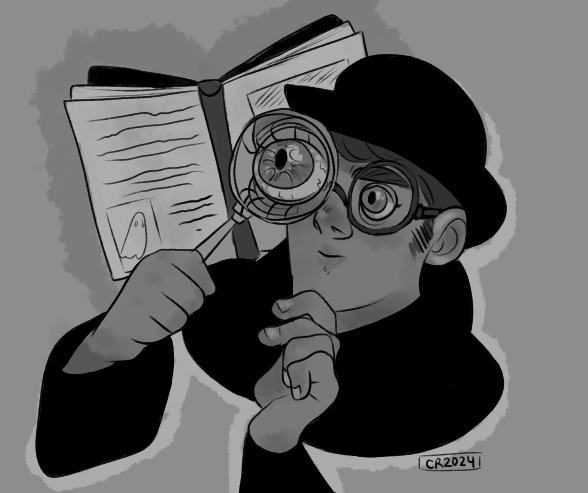After stumbling upon claims about a munchkin hanging themselves on the set of The Wizard of Oz due to harsh working conditions, I dived into thorough research on the topic. My research revealed that actors faced terrible treatment during the film’s production in the 1930s. I was initially swayed by a clip on YouTube showcasing something hanging in the background, where Dorothy, the Tin Man, and the Scarecrow sing “We’re off to see the wizard”. However, it became clear that the clip was edited and uploaded to stir controversy, with the object actually being a stork, not a hanging munchkin. Obviously, it is implausible for a reputable company to produce a movie containing such an incident occurring.
Motivated after discovering the truth about this myth, I have embarked on debunking famous myths and controversies with similar weight.
When talking about body related myths, I was told by adults around me when I was young that alcohol keeps you warm, however, the sensation of warmth experienced after drinking alcohol is due to the dilation of blood vessels, causing more blood to flow to the skin’s surface, giving a false sense of warmth. In fact, this actually increases the risk of hypothermia by impairing the body’s ability to regulate temperature.
Were you also told that you must be a right-brained person if you are creative or a left-brained person if you are research conducted? Well, research conducted by Jared Nielsen from the University of Utah involving brain scans of over 1,000 individuals found no evidence supporting the notion of left- or right-brain dominance. It was found that it lacks scientific validity in relation to astrology. Finally, before I play soccer, I always observe my teammates stretching to avoid injuries, however stretching does not guarantee a prevention of injuries. Finnish researchers reviewed studies involving nearly 5,000 participants and determined that pre-exercise stretching does not impact injury rates significantly. Instead, they recommended engaging in a gentle aerobic warm-up to adequately prepare the muscles for physical activity.
“Do not give them sugar, they are going to be hyper!” Have you heard something along these lines? Well, there is no proven link between sugar consumption and children’s excitement or hyperactivity. Interestingly, studies have failed to find behavioral differences between children on sugar-free diets and those consuming sugary foods. What is more interesting is that a 1994 study from the University of Kentucky, showed that parental beliefs about sugar intake influenced their perceptions of their children’s behavior, highlighting a self-fulfilling prophecy effect.

Who doesn’t love a good old Chinese hotpot? But remember, when making the sauce, MSG is an integral ingredient. I was led to believe that it was harmful; however, the flavor enhancer commonly found in processed foods and fast food, is generally considered safe by health authorities when consumed in moderation.
A good old horror story sparks everyone’s curiosity, but do people believe what they want to? Christopher Quaratino, who lived in the infamous “Amityville Horror” house as a child, refutes many of the sensationalized claims portrayed in books and movies about the haunting. He suggested that his stepfather, George Lutz, fabricated much of the narrative surrounding the haunting to capitalize on the public’s fascination with the supernatural.
The Bermuda Triangle was a scary location for everyone to fly over especially before the generalization of the internet to provide us with more information on it. With numerous ships and planes reportedly disappearing in its waters, it was a daunting area. However, Australian scientist Karl Kruszelnicki, along with institutions like the National Oceanic and Atmospheric Association (NOAA) and Lloyd’s of London, attributes these incidents to factors like probabilities, erratic weather, and navigational challenges rather than any claimed supernatural forces. Kruszelnicki emphasizes that the frequency of disappearances in the Bermuda Triangle is comparable to other heavily traveled areas of the ocean, and scientific evidence suggests environmental factors like the Gulf Stream and magnetic anomalies may play significant roles.
Although the general public has a fascination with sea monsters or the supernatural, the prevailing scientific view suggests that mundane explanations rooted in physics and human error are more plausible than sea monsters, especially in 2023, unless Bigfoot or the Yeti still exist, what if they do, shhh.
Did we actually go to the moon in the 1960s, or was it just a good old Hollywood studio with Stanley Kubrick at the helm? Well, the moon landing hoax myth suggests that the Apollo moon landings were faked by NASA and that the footage and photographs were staged. There is evidence supporting the moon landings, including the rock samples brought back from the lunar surface, which have been analyzed by scientists worldwide and found to have unique characteristics consistent with their origin on the moon. Additionally, independent tracking stations around the world monitored the Apollo missions, confirming their route to the moon and back. Also, it would require modern-century technology to stage such an elaborate hoax in the 1960s. Overall, the overwhelming consensus among scientists, engineers, and historians is that the Apollo moon landings were genuine achievements of human exploration which was found through my thorough research.
Disappointing, right? How evidence drives you away from fantasies. Although most of these myths have some weight to them, these weights are added by our personal prejudices, like the notion that some people like to still believe in 2024, that the earth is flat, it really is not, my friend.





